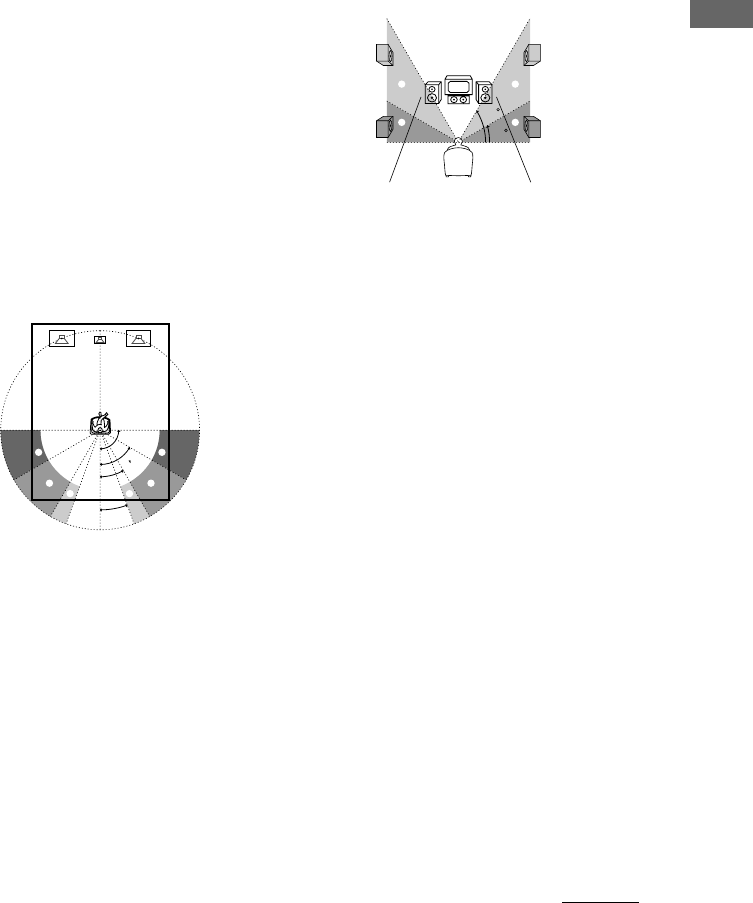
11
Getting Started
x Rear speaker position (R.PL.)*
This parameter lets you specify the location of
your rear speakers for proper implementation
of the Digital Cinema Sound surround modes
in the “VIRTUAL” sound fields. Refer to the
illustration below.
• Select “SIDE” if the location of your rear
speakers corresponds to section A.
• Select “MIDDLE” if the location of your rear
speakers corresponds to section B.
• Select “BEHIND” if the location of your rear
speakers corresponds to section C.
This setting only effects the surround modes in
the “VIRTUAL” sound fields (“VIRTUAL”
indicator in the display lights up).
The bass frequencies are effectively reproduced
from the speakers.
x Rear speaker height (R.HGT.)*
This parameter lets you specify the height of
your rear speakers for proper implementation
of the Digital Cinema Sound surround modes
in the “VIRTUAL” sound fields. Refer to the
illustration below.
• Select “LOW” if the location of your rear
speakers corresponds to section A.
• Select “HIGH” if the location of your rear
speakers corresponds to section B.
This setting only effects the surround modes in
the “VIRTUAL” sound fields (“VIRTUAL”
indicator in the display lights up).
* These parameters are not available when “Rear
speaker selection (REAR)” is set to “NO”.
Tip
The rear speaker position parameter is designed
specifically for implementation of the Digital Cinema
Sound modes in the “VIRTUAL” sound fields.
With the Digital Cinema Sound modes, speaker
position is not as critical as other modes. All of the
modes in the “VIRTUAL” sound fields were
designed under the premise that the rear speaker
would be located behind the listening position, but
presentation remains fairly consistent even with the
rear speakers positioned at a rather wide angle.
However, if the speakers are pointing toward the
listener from the immediate left and right of the
listening position, the “VIRTUAL” sound fields will
not be effective unless the rear speaker position
parameter is set to “SIDE”.
Nevertheless, each listening environment has many
variables, like wall reflections, and you may obtain
better results using “BEHIND” or “MIDDLE” if your
speakers are located high above the listening position,
even if they are to the immediate left and right.
Therefore, although it may result in a setting contrary
to the “Rear speaker position” explanation, we
recommend that you playback multi channel surround
encoded software and listen to the effect each setting
has on your listening environment. Choose the setting
that provides a good sense of spaciousness and that
best succeeds in forming a cohesive space between
the surround sound from the rear speakers and the
sound of the front speakers. If you are not sure which
sounds best, select “BEHIND” and then use the
speaker distance parameter and speaker level
adjustments to obtain proper balance.
60
30
A
B
A
B
60°
90°
20°
A
B
30°
B
C C
A
continued


















